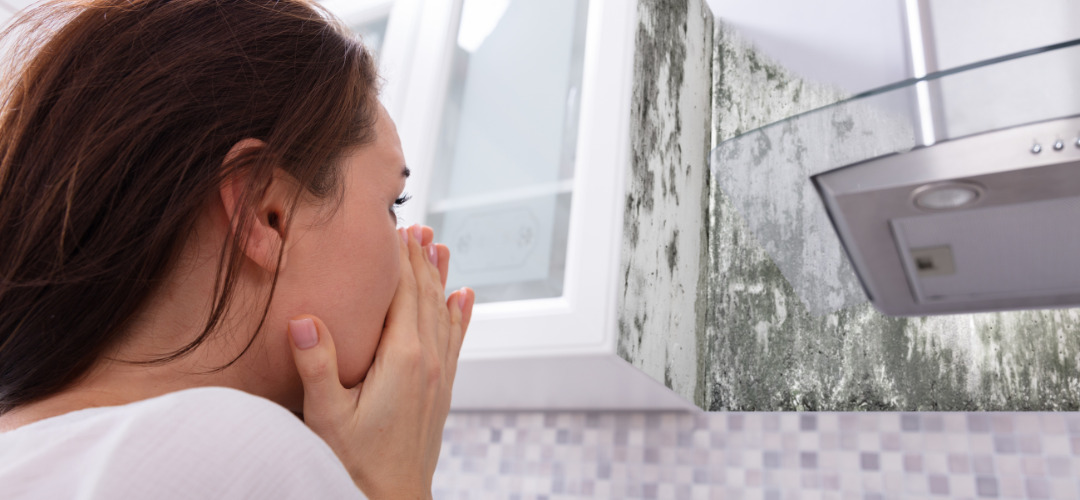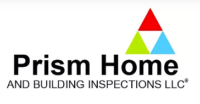
Prism Home Inspections
Love where you live after you move in.

Post Remediation Verification
Mold remediation can be costly. Don’t rely on the biased mold remediation contractor you hired to provide you with a finished mold remediation project until you have had testing done by an unbiased third party. Prism Home and Building Inspections LLC does not provide mold remediation. Our experienced inspectors, along with our third-party testing lab, are your best source to provide you with unbiased post-testing for mold remediation projects to verify mold has been removed from your home and/or building.
Types of Sampling Methods
Air sampling using spore traps
Air samples are useful in the assessment of exposure levels to occupants of an indoor environment. Air samples (using spore traps) can detect hidden sources of mold growth and determine if spores are present in the breathable air. During testing using the spore traps, mold spores are collected in an air sampling cassette which has a sticky test slide located within the cassette. The results of the test are calculated in mold spores per cubic meter of air for each of the represented types of mold trapped. This type of testing is most recommended for use for pre and post-testing for the presence of mold in a dwelling.
Surface Sample
Surface samples are taken to determine the presence and type of mold/s growth on the surface. Surface samples are taken by tape lift imprint, by swabbing or by sending a bulk sample to the lab for analysis. Surface samples are helpful in determining if black mold may be the hazardous Stachybotrys type. Mold spores from Stachybotrys are heavy and not always easy to detect from air sampling alone. Our inspector may recommend testing visually apparent molds.
Moisture Assessment Evaluation
The first step in eliminating mold from the indoor environment is to determine the source of moisture. To control and eliminate mold growth, moisture must be controlled.
To determine moisture sources that can be conducive to mold growth, we offer a moisture assessment evaluation. The evaluation is a visual assessment of the home or building that is augmented using moisture detection equipment. The inspection is of the exterior building envelope to identify construction defects and neglected maintenance issues which can result in water penetration into the exterior building envelope or interior of the home or building.
Also included, is a roof assessment to determine roof damage, and an assessment of roof to surface drainage issues that can contribute to a conducive environment for mold growth.
Up to a third of breathable air in a home comes from the crawl space (the area under the home or building). If the home or building has a crawl space, this area is also inspected for mold growth, proper ventilation, moisture barriers, presence of floor insulation and proper installation of the material, and moisture content in the wood floor structure is tested.
Interior components such as the HVAC system is tested for proper operation, plumbing systems are checked for leakage. Homes that are built too tightly, or lack proper ventilation and insulation provide conducive environments for mold to grow. Therefore, mechanical ventilation systems and attic/roof ventilation are also checked. A digital report with pictures is provided detailing deficiencies found with recommendations for corrective action. This is a first step prior to starting any mold remediation work.
Frequently Asked Questions About Mold
What type of mold is in my house? Is the mold toxic?
Mold cannot be identified by sight without magnification by a microscope. Collecting samples and having them analyzed by a laboratory are the first steps to identifying if there is any cause for concern.
Why not use the mold test sold in my home store?
The tests that are sold from the store shelf are not accurate to determine if mold colonies are present in the home or building.
Here’s why: The air in the home comes from the outdoor air. As the mold spores are microscopic, they easily find their way into the interior of the home. The store shelf test will only tell you if mold is present in the home’s air, the test does not determine if the mold came from the outdoor air or if it is from a source from within the home (only mold sources from within the home are of a concern, we cannot kill all the mold found outdoors).
The store shelf test has no way to determine at what volume the mold spore is present. In the case of toxic Stachybotrys mold, which has a heavy spore which makes it difficult to become airborne, the store shelf test may not be accurate to determine if this hazardous mold is present in your home or building. When testing a home with spore traps, the inspector will often take a tape lift of the black mold/s found to determine if it contains Stachybotrys. Lastly, the store shelf test does not come with a pair of our inspector’s trained eyes.
I see mold in my attic, should I be concerned?
Yes, you should be concerned when mold is found in an attic. We know that mold growth on building surfaces is a result of moisture. Mold growth in an attic is a symptom of a roof leak or a ventilation/insulation issue. Since mold feeds on organic materials such as the wood structure, the mold in time will do structural damage to the wood materials. Unless you have an attic space with no ventilation, such as one that has been spray foamed, the air in the attic does not mix with the indoor air found in our living spaces below the attic. This is a result of building science and stack effect. The air in the home of a vented attic space moves upward and out of the attic ventilation. We do not do air sampling of attic spaces that are vented for this reason, because it makes as much sense to sample outdoor air. So, if you are worried about health effects from mold in the attic to inhabitants of occupants in the floors below, don’t be. You should, however, be concerned for the effects the mold is having on the building’s roof structure.
My home has a spray foamed attic space, is this a concern?
Not if you have adequate fresh air coming inside the attic from the outdoors. This is accomplished in most cases by adding a fresh air intake to the return side of the HVAC systems air handler/s. We have found that this is done in most new construction. However, this is not commonly done in older, existing homes that are retrofitted with spray foam. Further, in the State of Georgia, if you have rolled insulation with a backing material installed over the ceiling areas, this insulation is required to be removed when spray foam is installed to prevent moisture condensation from being trapped between the ceiling and the insulation material; otherwise, there is a risk potential for mold growth.
Unfortunately, many times during our inspections of older homes that have been retrofitted with spray foam, we have found that the insulation has not been removed. The air in the attic becomes breathable air in the home when spray foam insulation is installed (not the case prior to installing the spray foam as the attic is vented to the outdoors). The effect of spray foam insulation is a tightening of the home. It stops the stack effect and eliminates natural fresh air intake into the home. The air in a home that has a spray foamed attic becomes stagnated, holding moisture from our living in the home. Elevated levels of moisture or humidity inside a building structure is conducive to mold growth or sick home. If you have had spray foam installed to your attic, we recommend you contact a Licensed HVAC contractor to determine if you have a fresh air intake installed to your system or call us to verify and perform mold testing.
How did mold get in my home or building?
Mold is everywhere because it occurs naturally in our environment: it is not uncommon to find it in any home. It enters from the outdoors through walls, windows, doors, HVAC systems. Spores from the outdoors attach themselves to people and animals, bringing mold indoors. Once inside, the spores will begin to grow if they land on places where there is organic materials and moisture.
How can I tell if there is mold in my home or building?
Some mold problems are obvious – you see it growing. You can also look for areas that are consistently wet, or have been wet due to flooding, water intrusion from a bad storm, leaky plumbing or roofing, and areas of high humidity such as bathrooms, laundry rooms, kitchens, and crawl spaces. Other mold problems are not so obvious. If you do not have any visual mold, but your home or building has a damp, musty smell or visual water stains, mold could be growing in areas you cannot see, such as in a wall cavity or the duct work of HVAC systems that have not been maintained (ducting is made of inorganic material and is not in itself conducive to mold growth, however mold can grow on the organic particulate found in a dirty system).
How can I stop mold from growing in my home or building?
Look for visible signs of mold growth and signs of excessive moisture or water damage. The earlier a problem is detected the better- mold activity can begin as soon as 24 hours after a water event.
Search areas with noticeable musty odors. Search behind and underneath materials such as carpets and padding, wallpaper, vinyl flooring, sink cabinets, furniture, pictures, or stored items, especially those that are placed against outside walls, closet areas or on cold floors.
Check around air handling units for stagnant water, and keep these units serviced with regular cleaning of ducts and air filters.
Use your HVAC system. Air conditioning cooling should be operating in the warm months (this will pull moisture out of the air). If you have a home with a basement or have damp areas, run a dehumidifier in those areas. Mold can grow if the humidity in the home is over 60%. An inexpensive hygrometer device to measure the home’s humidity can be purchased at most home improvement stores.
Turn the bathroom exhaust fan on when showering and/or open the bathroom window.
Plants and fish aquariums can put moisture into the air that can attribute to increased humidity in a home.
If you have a crawl space, having adequate drainage around the home’s perimeter along with gutters and down spouting to control roof run off away from the crawl space is key to keeping rainwater from finding the space under the home. Crawl spaces also require a moisture barrier installed on the crawl space floor to reduce the effects of moisture from the ground. Providing adequate ventilation to the crawl space is also key to keeping the area under the home dry.
Helpful Links
PRISM HOME AND BUILDING INSPECTIONS. PROTECT YOUR INVESTMENT.
We guarantee ALL our work.
Over 20 years serving your community.
Fully Licensed and Insured.
